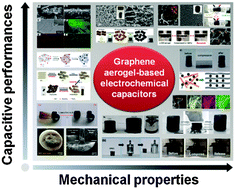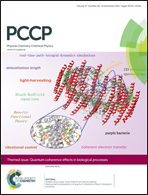Chemical modification of graphene aerogels for electrochemical capacitor applications
Abstract
Graphene aerogel is a relatively new type of aerogel that is ideal for energy storage applications because of its large surface area, high electrical conductivity and good chemical stability. Also, three dimensional interconnected macropores offer many advantages such as low density, fast ion and mass transfer, and easy access to storage sites. Such features allow graphene aerogels to be intensively applied for electrochemical capacitor applications. Despite the growing interest in graphene aerogel-based electrochemical capacitors, however, the graphene aerogels still suffer from their low capacitive performances and high fragility. Both relatively low capacitance and brittleness of physically crosslinked graphene aerogels remain a critical challenge. Until now, a number of alternative attempts have been devoted to overcome these shortcomings. In this perspective, we summarize the recent research progress towards the development of advanced graphene aerogel-based electrochemical capacitors according to the different approaches (e.g. porosity, composition and structure controls). Then, the recently proposed chemical strategies to improve the capacitive performances and mechanical durability of graphene aerogels for practical applications are highlighted. Finally, the current challenges and perspectives in this emerging material are also discussed.


 Please wait while we load your content...
Please wait while we load your content...